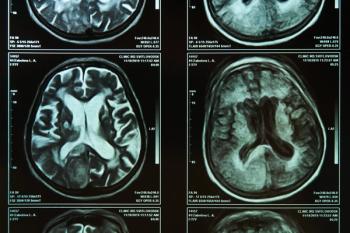
- Vol 30 No 6
- Volume 30
- Issue 6
Grief and Depression: The Sages Knew the Difference
While it is true that the intense grief of bereavement and major depressive disorder often share some features-for example, tearfulness, insomnia, low mood, and decreased appetite-there are many substantive differences.
"There is nothing as whole as a broken heart."-the Kotzker Rebbe
In the intense debate over elimination of the “bereavement exclusion” from DSM-5, a persistent claim among those who opposed the elimination was that intense grief and mild major depression are virtually indistinguishable-at least, shortly following the death of a loved one.1 But while it is true that the intense grief of bereavement and MDD often share some features-eg, tearfulness, insomnia, low mood, and decreased appetite-there are many substantive differences.2,3
This is true not merely in terms of the DSM’s “checklists” of symptoms, but also in phenomenological terms, ie, how the affected person experiences herself and the world.4 For example, unlike the person with MDD, most recently bereaved individuals are usually not preoccupied with feelings of worthlessness, hopelessness, or unremitting gloom. Rather, self-esteem is usually preserved, the bereaved person can envision a “better day,” and positive thoughts and feelings are often interspersed with negative ones.2-4
It is striking that many sages and scholars of ancient and early modern times seem to have appreciated these differences far better than some modern-day writers. Indeed, the distinction between severe (“clinical”) depression and ordinary sorrow seems to be as old as recorded history. Thus, in the Old Testament, the figure of King David presents us with portraits of both severe depression and normal bereavement. In Psalm 38, conventionally ascribed to David, the psalmist laments his sins. He tells us that “there is no soundness in my flesh . . . no health in my bones because of my sin. . . . My wounds grow foul and fester because of my foolishness, I am utterly bowed down and prostrate; all the day I go about mourning. . . . I groan because of the tumult of my heart.”5 Modern diagnosticians would see in this description a picture quite consistent with an episode of severe (perhaps melancholic) major depression.
In contrast, after the death of his beloved friend, Jonathan, the very same King David is moved to write a passionately stirring dirge, known as “The Lament of the Bow” (2 Samuel 1:17-27), addressed to his lost friend: “How have the mighty fallen. . . . I grieve for you, my brother Jonathan, you were most dear to me . . . ”5 There is no trace, in David’s lament, of the self-loathing and bodily decay found in Psalm 38. David’s period of mourning after Jonathan’s death represents roughly what modern-day mental health professionals would call “uncomplicated bereavement”-not clinical depression.
Fast-forward nearly 3 millennia to 19th century Europe, in the area of present-day Belarus, where the Jewish mystical movement known asHasidism was developing. There we find the remarkable figure of Rabbi Schneur Zalman (RSZ) of Liady (1745-1812), known as “The Alter Rebbe”-the founder of what became known as Chabad.6 (The term “Chabad” is an acronym of 3 Hebrew words that mean “wisdom, understanding, and knowledge”). Chabad-also known as the Lubavitch movement-represented a synthesis of the rational and mystical elements of Judaism. While a de-tailed discussion of Chabad would take us far afield, it is quite extraordinary to find that RSZ described a typology of grief and depression that bears an uncanny resemblance to our modern-day understanding of these conditions. In his classic work known as the Tanya, RSZ distinguished between 2 conditions, called merirut and atzvut.6 While these terms are variously translated, their rough, English equivalents are, respectively, sorrow and melancholy. They are also sometimes distinguished as constructive grief vs destructive grief, or as bitterness vs dejection.
In distinguishing merirut from atzvut,
“The first is active, the second-passive. The first one weeps, the second’s eyes are dry and blank. The first one’s mind and heart are in turmoil; the second’s are still with apathy and heavy as lead. And what happens when it passes, when they emerge from their respective bouts of grief? The first one springs to action: resolving, planning, taking his first faltering steps to undo the causes of his sorrow. The second one goes to sleep.” 7
(based on Tanya, ch.31)
Merirut, in other words, is constructive; atzvut, destructive. The epigram at the beginning of this essay-“There is nothing as whole as a broken heart”-expresses a crucial paradox: when we grieve in a “healthy” and adaptive way, we ultimately integrate the loss into the larger fabric of our life. We learn and grow, even as we ache with sorrow. In contrast, with severe depression, we are beaten down and sometimes broken. Indeed, atzvut-destructive grief-bears some striking resemblances to our modern-day conception of melancholia, as described by Taylor and Fink.8,9 The Table summarizes some of the main features of merirut, atzvut, and melancholia.
Perhaps if Rabbi Schneur Zalman had been around during the recent, vitriolic debate over the bereavement exclusion, we would have seen more light and felt less heat!
Table: Main features of merirut, atzvut, and melancholia
Note to readers: I will be taking a “sabbatical” from my regular writing for Psychiatric Times, over the next 6 months to work on a novel (writing, not reading, one!). I appreciate all the many readers who have commented-favorably or not-on my columns, and I may still chime in now and then, as the spirit moves me.
Acknowledgment: I wish to thank Rabbi Bezalel Naor for pointing out RSZ’s distinction between merirut and atzvut.
This article was first posted online on 4/29/2013 and has since been updated.
References:
1. Frances A. Last plea to DSM-5: save grief from the drug companies. See Russell Friedman: “Not even the best trained clinicians can distinguish grief from mild depression.” (If this were true, of course, then no clinician could ever be mistaken in diagnosing either grief or major depression, after bereavement). Huffington Post Blog. 1/7/13.
2. Zisook S, Shear K. Grief and bereavement: what psychiatrists need to know. World Psychiatry. 2009;8:67-74.
3. Lamb K, Pies R, Zisook S. The bereavement exclusion for the diagnosis of major depression: to be, or not to be. Psychiatry (Edgmont). 2010;7:19-25.
4. Pies RW. After bereavement, is it “normal grief” or major depression? Psychiatr Times.
5. May HG, Metzger BM, eds. The Oxford Annotated Bible, Revised Standard Version. Oxford, UK: Oxford University Press; 1962.
6. Mindel N. The Philosophy of Chabad. Brooklyn, NY: Kehot Publication Society; 1985.
7. Kahn A. Good Grief.
8. Kaplan A. Whither melancholia? Psychiatric Times. January 8, 2010.
9. Taylor MA, Fink M. Melancholia: The Diagnosis, Pathophysiology, and Treatment of Depressive Illness. Cambridge, UK: Cambridge University Press; 2006.
Also consulted:
• Rabbi Adin Steinsaltz. Understanding the Tanya: Volume Three in the Definitive Commentary on a Classic Work of Kabbalah by the World’s Foremost Authority. San Francisco: Jossey-Bass; 2007.
• Rabbi Zushe Greenberg. “Sadness.”
Accessed April 30, 2013.
• Rabbi Yisroel Cotlar. I sinned and repented: now what?
Articles in this issue
over 12 years ago
The Family Guide to Mental Health Careover 12 years ago
“PRN” Medication for Alcohol Dependence May Reduce Harmover 12 years ago
No Mortality Increase With Antipsychotics in Prospective Studyover 12 years ago
Epidemiology and Treatment of Substance Use and Abuse in Adolescentsover 12 years ago
Bias Against Schizophrenic Patients Seeking Medical Careover 12 years ago
Pain and Suicideover 12 years ago
Shared Risk Factors in Multiple Psychiatric Disordersover 12 years ago
Genetics and Pharmacogenetics of Schizophrenia: Recent ProgressNewsletter
Receive trusted psychiatric news, expert analysis, and clinical insights — subscribe today to support your practice and your patients.













